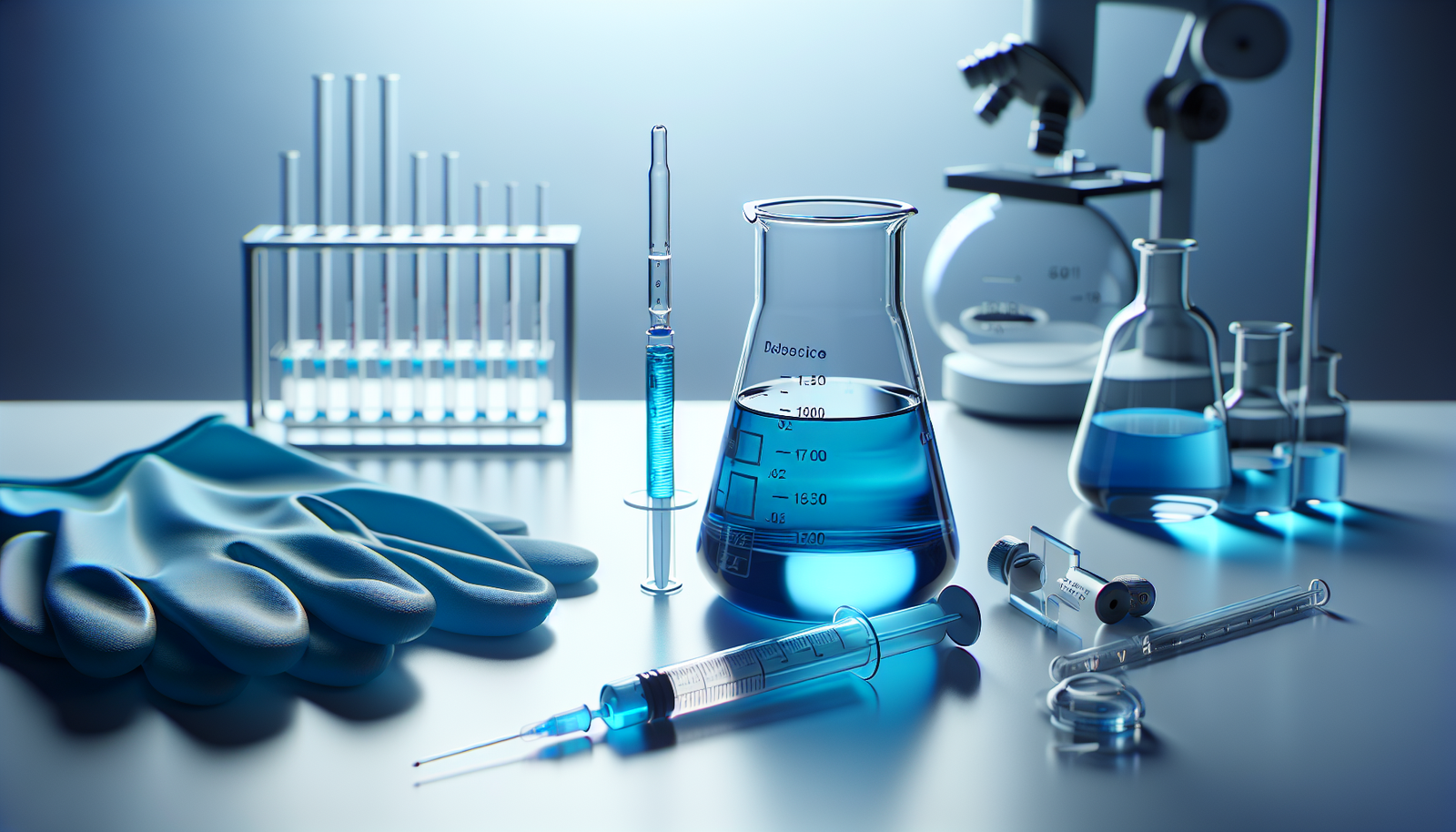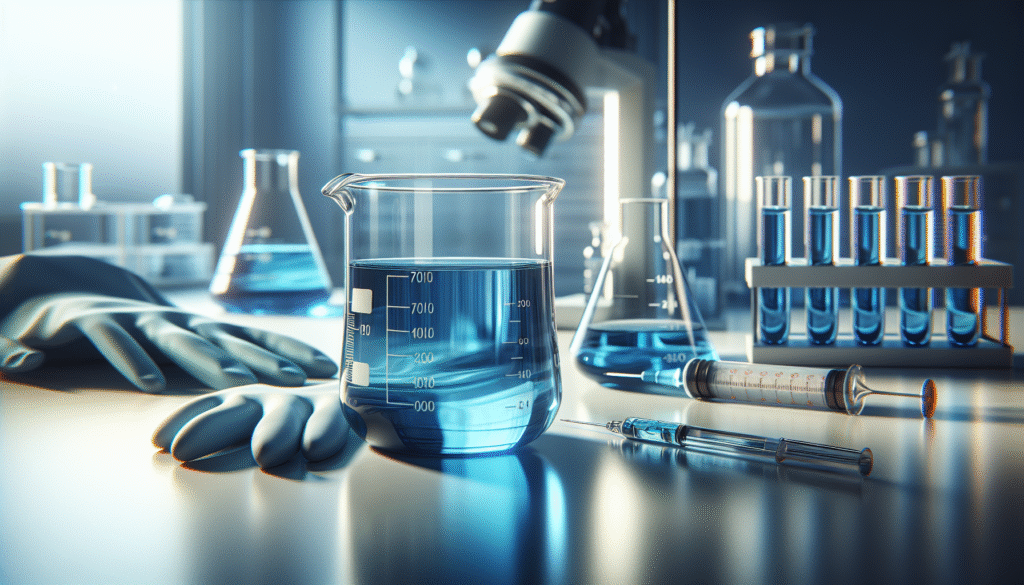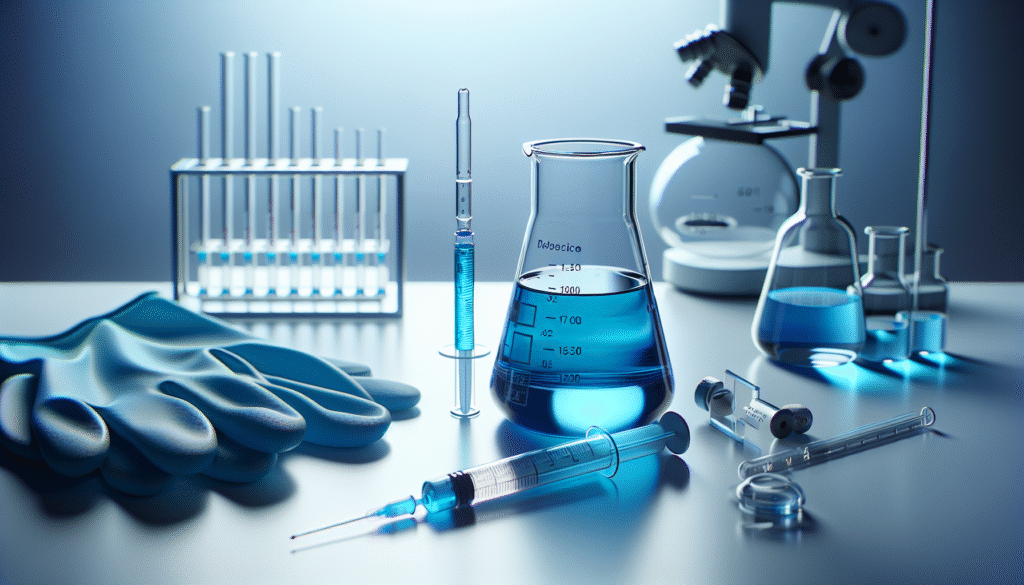
Have you ever wondered how to safely dilute methylene blue without compromising its effectiveness?

Understanding Methylene Blue
Methylene blue is a synthetic dye with numerous applications in various fields, including biology, medicine, and even aquaculture. Known for its vibrant blue color, it is commonly used as a stain in laboratories, a treatment for certain medical conditions, and in aquaristics for treating fish diseases. However, improper handling and dilution can lead to ineffective results or unexpected reactions. Therefore, understanding how to dilute methylene blue safely is paramount for both research and therapeutic applications.
Uses of Methylene Blue
To appreciate the significance of proper dilution, consider the various uses of methylene blue. In medical settings, it can be used as an antiseptic, and it also plays a role in treating methemoglobinemia— a condition where blood cannot effectively release oxygen to tissues. In laboratories, it is employed as a stain for microorganisms, enabling researchers to visualize cells under a microscope. Recognizing its versatile applications will emphasize the importance of accurate handling techniques.
Safety Precautions
Before beginning the dilution process, take essential safety precautions to protect yourself and your environment. Methylene blue can cause skin and eye irritation upon contact, so personal protective equipment (PPE) is a necessity.
Personal Protective Equipment (PPE)
Wearing proper PPE is critical when handling methylene blue. The following table outlines the necessary items:
| Item | Purpose |
|---|---|
| Gloves | Protects skin from direct contact. |
| Safety goggles | Shields eyes from splashes. |
| Lab coat or apron | Protects clothing from stains and spills. |
| Mask (if necessary) | Prevents inhalation of particles or fumes. |
Ensure that you wear these items every time you handle methylene blue to maintain a safe working environment.
Work area preparation
Creating a suitable workspace is equally important. Select a well-ventilated area, preferably a laboratory or a space equipped with fume hoods. Ensure that your workspace is free from clutter, and clearly label all chemical containers to avoid confusion. This organized approach not only facilitates the dilution process but also minimizes the risk of accidents.
Materials Needed
Before diving into the dilution process, gather all necessary materials. Having everything prepared in advance will enhance the efficiency of your procedure.
Required Materials
The following items are essential for safely diluting methylene blue:
| Item | Description |
|---|---|
| Methylene blue solution | The stock solution that requires dilution. |
| Distilled water | Purified water used for dilution. |
| Measuring cylinder | Accurate measurement tool for liquids. |
| Pipette | Transports small volumes of liquid. |
| Stirring rod | Mixes solutions thoroughly. |
| Clean glass containers | Holds the diluted solutions. |
Accurate measurements and proper tools are critical to ensure that you achieve the desired concentration without any mishap.
Dilution Procedure
Now that you are equipped with all necessary materials and safety measures, you can embark on the actual dilution procedure.
Step 1: Determine the Desired Concentration
Clearly defining the target concentration is vital. Consider the intended application of the methylene blue solution. Different applications may require varying concentrations. For example, aquarists may prefer a concentration of 0.1% for treating fish diseases, whereas laboratory applications might necessitate a different ratio.
Step 2: Calculate the Required Amount of Stock Solution
Once you have established the desired concentration, calculate the amount of stock solution required for dilution. Use the following formula to assist you in making these calculations:
[ C_1 \cdot V_1 = C_2 \cdot V_2 ]
Where:
- (C_1) = Initial concentration of the methylene blue stock solution
- (V_1) = Volume of the stock solution needed
- (C_2) = Final desired concentration
- (V_2) = Final volume of the diluted solution
For example, if you have a 1% methylene blue stock solution and you want to prepare 100 mL of a 0.1% solution, you’d set your equation as follows, and then solve for (V_1):
[ 1% \cdot V_1 = 0.1% \cdot 100 \text{ mL} ]
Solving this gives (V_1 = 10 \text{ mL}).
Step 3: Measure the Stock Solution
Using your measuring cylinder or pipette, accurately measure out the calculated volume of the methylene blue stock solution. Be meticulous, as any inconsistency in measurements can lead to a concentration that does not meet your requirements.
Step 4: Add Distilled Water
Next, measure the correct volume of distilled water needed for dilution. This can be calculated using the formula:
[ V_W = V_2 – V_1 ]
Where (V_W) is the volume of water needed. Following the earlier example, if you’re making a total of 100 mL, you’d require 90 mL of distilled water to achieve the correct dilution.
Pour the distilled water into a clean container first, and then add the previously measured methylene blue stock solution to it. This method minimizes the potential for splashes and ensures even mixing.
Step 5: Mix Thoroughly
Using a stirring rod, gently mix the solution to ensure complete integration of the methylene blue with the distilled water. Aim for a homogenous mixture, as uneven concentrations may lead to suboptimal results.
Step 6: Label the Container
After completing the dilution, clearly label the container with the following information:
- The concentration of the solution (e.g., 0.1% Methylene Blue)
- The date of preparation
- Any relevant hazard warnings
Labeling not only enhances safety but is also vital for effective inventory management, especially in laboratory settings.

Storage and Disposal
Understanding how to store and dispose of methylene blue solutions safely is critical. Incorrect practices can have environmental and health implications.
Storage Guidelines
To maintain the integrity of your diluted solution, follow these storage guidelines:
- Store the solution in a cool, dark place, preferably in an amber or opaque container to protect it from light, as exposure can degrade its effectiveness.
- Ensure the container is tightly sealed to minimize evaporation and contamination.
- Keep the solution out of reach of children and pets to prevent accidental exposure.
Disposal Considerations
When it comes time to dispose of leftover methylene blue or contaminated materials, ensure you follow appropriate disposal protocols. Methylene blue can be harmful to aquatic life, making safe disposal essential.
- Check local environmental regulations and waste disposal guidelines for chemicals.
- Dispose of methylene blue solutions through designated hazardous waste services when available.
- Do not pour any waste down the drain without consulting local regulations, as this can lead to environmental damage.
Common Errors to Avoid
When diluting methylene blue, certain common pitfalls may arise. Recognizing and avoiding these can save you time and ensure safety.
Over-Dilution or Under-Dilution
One of the most prevalent mistakes is miscalculating the amounts needed for dilution. Always double-check your math and take care when measuring out both the stock solution and distilled water. Use a calculator or dilution app if you are unsure about manual calculations.
Inadequate Mixing
Failing to mix the solution thoroughly can lead to areas of different concentrations, impacting the solution’s efficacy. Take the time to stir well, ensuring a consistent mixture throughout.
Conclusion
Handling and diluting methylene blue requires careful attention to detail. Understanding its properties and applications is as crucial as following safety practices and precise dilution techniques. Through this step-by-step guide, you now have the knowledge necessary to prepare methylene blue solutions efficiently and safely.
By adhering to these procedures, you can ensure that your applications of methylene blue—whether for medical, laboratory, or aquaculture purposes—will be successful and risk-free. As with any chemical handling, education and caution are your best tools for safety and effectiveness.